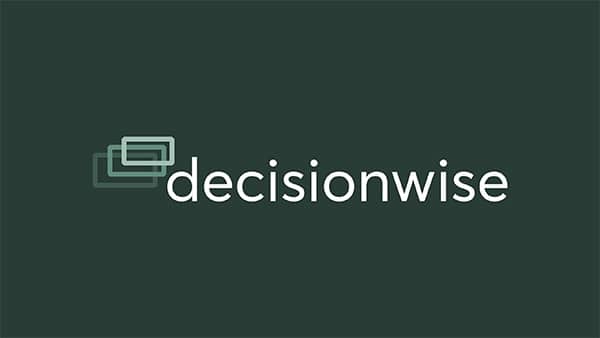What’s Happening at DecisionWise
JANUARY WEBINAR
2023 was a challenging year for organizations, from hybrid work to DEI efforts, compensation, retention, and workload pressures. In this session, we’ll delve into popular Employee Experience trends from 2023 and forecast future trends for 2024, including survey findings on these topics.
- Remote work and work-life balance perceptions
- Compensation’s impact on engagement and retention
- The merger of Culture with Diversity, Equity, Inclusion, and Belonging
- Top reasons for turnover
- Emerging employee experience trends for 2024
We hope you’ll join us!
What You Might Have Missed
- Did you know DecisionWise moderates a LinkedIn group you might be interested in: The Employee Experience group?
- DecisionWise got together for a fantastic end-of-year Christmas Party.
- If you didn’t have a chance to watch our most recent webinar, Our Favorite Tips for Improving Employee Engagement, we recorded it for you.
- Our most recent article has 5 Proven Tips to Elevate Employee Engagement.
- Here’s a quick recap of 2023 at DecisionWise. Thanks to all of you for a fantastic year.
- Here’s how to empower your deskless workers.
- Check out this post on 3 Ways to Engage Deskless Employees.
- Tracy Maylett DecisionWise CEO published an article recently: A Successful Business Strategy Depends on Listening To Your Employees.
Featured Discussion
Welcome to an exciting month as we unveil a new performance review module for our 360-degree feedback software platform, Spectiv®. We have been knee-deep for the last few years researching and studying best practices for performance reviews.
This process has been enlightening, revealing a fascinating reality – there’s little consensus on what defines an effective performance evaluation or the optimal design for a performance review program. Each organization seems to have its unique approach, often influenced by the pursuit of simplicity or trends within the HR space.
So, I experimented. I asked ChatGPT to write me an article on performance review best practices. As expected, some of the insights were quite good. Others? Not so much. Here is my critique of the AI-generated article. ChatGPT text is in italics, and my comments are in bold. Let’s jump in and get started.
Title: Enhancing Performance Evaluations: Strategies for Success
Introduction:
Performance evaluations are a crucial aspect of professional development and organizational growth. When conducted effectively, they provide valuable insights into employees’ strengths, areas for improvement, and their overall contribution to the company’s success. To ensure that performance evaluations yield meaningful results and foster a positive work environment, consider the following tips for improvement.
All of this is true, but ChatGPT’s opening paragraph misses, as we fully expect, a vital component of the performance review/evaluation process.
Currently, a main theoretical driver behind performance reviews is what many call “performance management.” Not surprisingly, this first paragraph is all about this concept: How do we help employees improve? While performance management is grounded in so many good ideas, it can also cause us to miss an important aspect of the entire process, which is appraisal.
Employees want to know how they are doing; both relative to their past performance but also in how they stand compared to others. Absent a formal evaluative mechanism, a distinct score or evaluation is never gathered or provided. Organizations need to have a clear sense of objective performance, which includes the ability to see where each employee’s performance lies on an overall performance continuum.
We’ve spotted a trend: the heavy emphasis on performance management tends to muddy the waters between developing employees and evaluating their contributions. Development is all about moving forward—equipping them with tools and support. On the flip side, appraisal looks back at what they’ve done for the team. The catch? Many current performance review methods sideline this vital appraisal piece. They’re missing out on recognizing past wins.
Set Clear Expectations:
Establishing clear expectations from the beginning is paramount. Clearly define job responsibilities, performance metrics, and key performance indicators (KPIs) for each role. This ensures that employees understand their objectives and can align their efforts with organizational goals.
Again, all true. But countless performance reviews skim over this part or overlook it altogether. An effective performance program needs a mechanism (or, a module) that addresses this need and causes it to be addressed consistently.
Regular Feedback Sessions:
Performance evaluations should not be a once-a-year event. Foster a culture of continuous feedback by implementing regular check-ins between employees and their supervisors. This enables ongoing communication, addresses concerns promptly, and allows for adjustments to be made in real-time.
Ahh, here it is – the concept of “continuous feedback.” Continuous feedback has become the main ingredient in current performance review thinking. The idea is that once-a-year conversations are not cutting it.
There is not doubt that ongoing conversations are important and very much needed, but with such a strong focus on encouraging frequent, less formal conversations, we are also seeing that the annual, formal evaluative process has stopped taking place altogether.
The rebuttal? Why do we need formal scores, if we are constantly helping our employees grow? I get it; and it is never a comfortable conversation to sit down with someone and give them a score or a grade. It is far easier to talk about “what constitutes a great environment to do your work?” Certainly, these question types lead to engaging conversations, but they can lull us into thinking we do not have to do the hard part: pause and tell someone whether they are making the grade.
Thus, in addition to frequent conversations around growth and development, an organization’s standard process should include a formal evaluative component that includes:
- A standardized appraisal formula that can be used across all functions;
- A defined period(s) in which the evaluative process takes place; and
- An appraisal methodology that is consistent and objective using 360-degree feedback (more on this later).
Use a Balanced Approach:
Avoid focusing solely on weaknesses or mistakes. Recognize and celebrate achievements and positive contributions. A balanced evaluation that acknowledges both strengths and areas for improvement encourages employee morale and motivation.
Again, this suggestion is more about employee growth and development. Of course, we should all do more to improve employee development, but such conversations should not unintentionally replace the appraisal part of the performance review process.
Encourage Self-Assessment:
Encourage employees to self-reflect on their performance before the evaluation. This helps them take ownership of their development, fosters self-awareness, and opens the door for constructive dialogue during the evaluation meeting.
Agreed.
Goal Setting and Development Plans:
Work collaboratively to set realistic and measurable goals for the upcoming performance period. Develop action plans for skill enhancement and career development, aligning individual aspirations with organizational objectives. This creates a roadmap for improvement and growth.
In HR, setting and tracking goals is a favorite, rooted in the belief that cataloging equals progress. While I won’t dispute this, let’s ask a crucial question: Does merely setting goals spur change? Nope, not really.
Real change kicks in when specific feedback reveals that your current approach isn’t cutting it. It’s about recognizing that your behavior, style, or skills may need a revamp, avoiding potential problems.
We’re quick to dive into goal-setting, mistakenly thinking it’s the core of the process. But here’s the scoop: lasting change only happens when employees grasp what it’s like to work with, around, or for them. Rushing into spreadsheets and software applications can overshadow the crucial “why am I struggling” phase, making the “what do I need to do” step less effective.
Remember, change driven by personal choice beats following a supervisor’s suggestion. Bottom line: No shift in thinking means no lasting behavioral change, turning goal setting into a list of unfulfilled resolutions.
360-Degree Feedback:
Incorporate feedback from peers, subordinates, and other stakeholders. A 360-degree approach provides a comprehensive view of an employee’s performance, promoting a more accurate and holistic evaluation.
Yes! Yes! Yes! This is why we are introducing performance reviews into our 360-degree feedback platform. Our research is clear: All employees view multi-rater (i.e., 360-degree) feedback as the most fair and objective way of evaluating one’s performance.
Training and Development Opportunities:
Identify training and development needs based on the evaluation results. Provide resources and opportunities for skill enhancement, workshops, and courses that align with both individual and organizational goals.
Perfect. These are great ideas for regular one-on-one conversations.
Stay Objective:
Ensure that evaluations are fair, unbiased, and based on measurable criteria. Objectivity is key to maintaining trust and credibility in the evaluation process.
Right. This is why integrating a 360-degree process into all performance reviews makes perfect sense. This type of feedback generates a standardized report, providing clear measurements and scores that can be thoroughly discussed with each employee.
Document Performance Throughout the Year:
Maintain detailed records of employee performance throughout the year. This documentation serves as a valuable reference during the evaluation process, allowing for a more accurate and comprehensive assessment.
Absolutely. One thing we have built into our platform is regularity; software is great at not forgetting things.
Celebrate Achievements Publicly:
Publicly acknowledge and celebrate individual and team achievements. This not only boosts morale but also reinforces a positive culture that values hard work and success.
No question: more frequent and public recognition is a winning strategy.
Conclusion:
Performance evaluations, when approached strategically and thoughtfully, can be a powerful tool for organizational success. By implementing these tips, organizations can create an evaluation process that promotes employee development, enhances performance, and contributes to a thriving work environment. Regularly reassess and refine your evaluation strategies to ensure they remain effective and aligned with the evolving needs of both employees and the organization.
While ChatGPT provides a great summation, business, and HR leaders must address the identified gaps in the performance review process.





